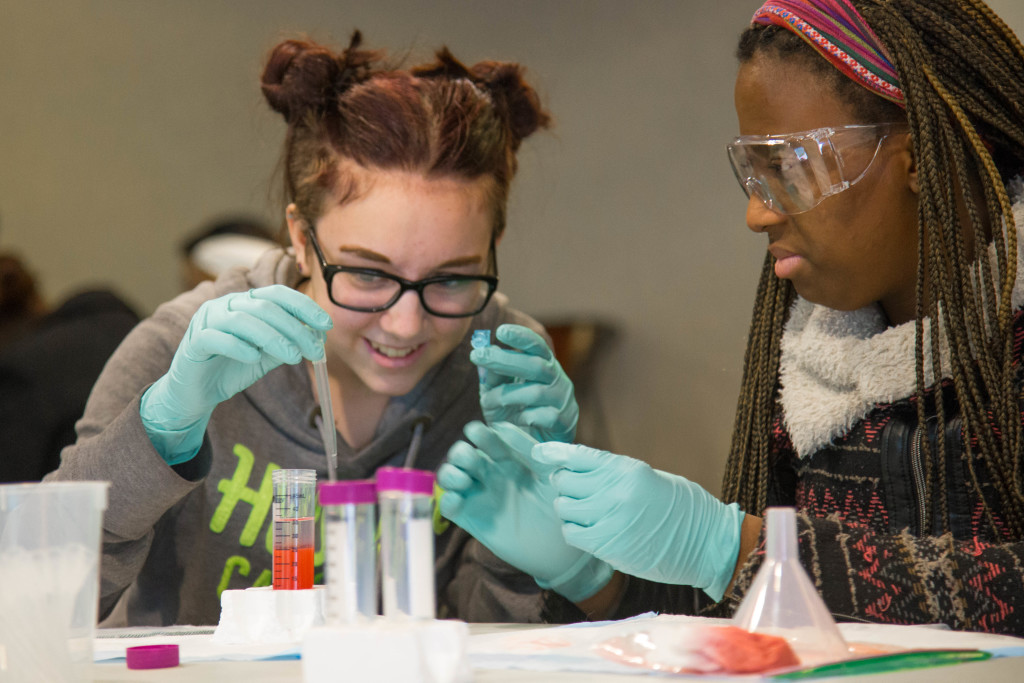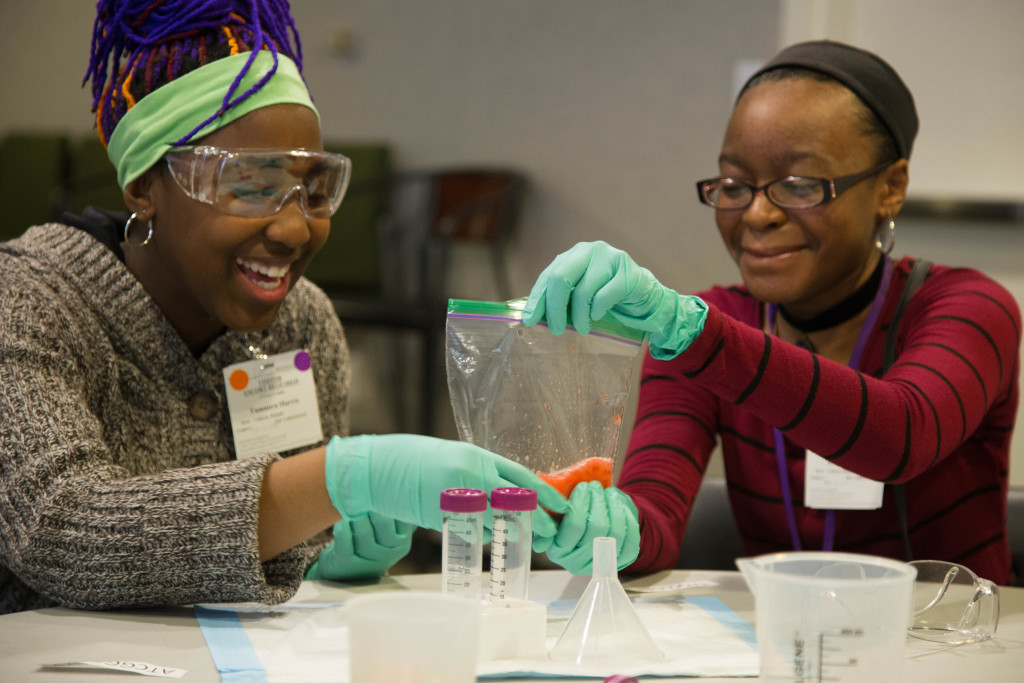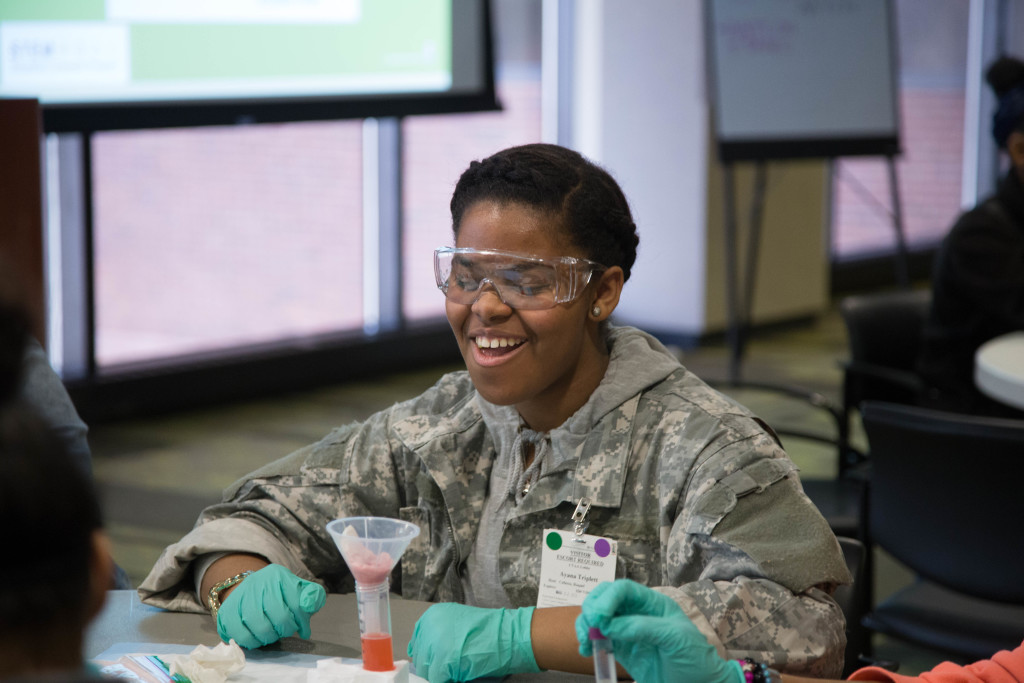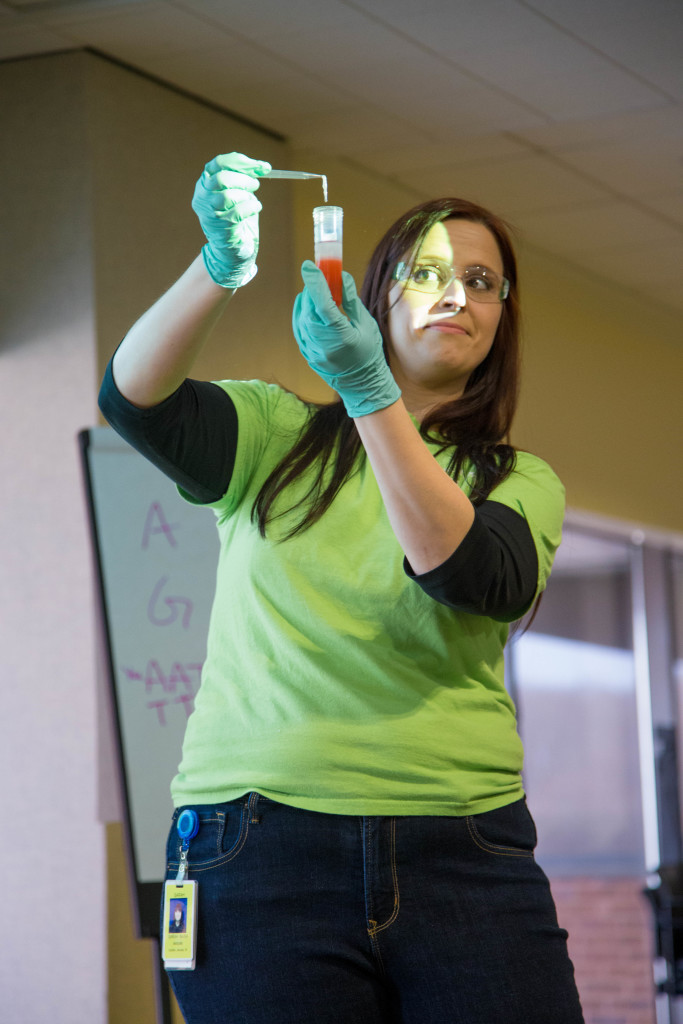Stories | April 5, 2017 | Read Time: 3 minutes
Monsanto Hosts STEM Event for High School Girls


The global population is rising, natural resources are stretched, and the climate is changing. These challenges will require science-based solutions and are a few reasons why choosing a career in STEM (science, technology, engineering, and math) is so important.


Although women make up more than half of the workforce in the United States, they are underrepresented in most STEM-related jobs. Since many students decide if they will pursue a STEM career before they get to college, it’s important to pique their interest by exposing them to science while they’re young.
Recently, Monsanto collaborated with other U.S.-based companies to host more than 100 female students for a STEM career day at our Chesterfield Valley Research Center with the goal of empowering them to embrace STEM-related careers. Some participants used #ShesSoSTEM on social media to document their experiences.


The students started the morning by watching a welcome video from Chelsea Clinton, who was part of the organizational effort behind #ShesSoSTEM. It highlighted the importance of being curious, following your dreams, and considering a career in STEM. Then they took a tour of the research facility and performed an experiment where they extracted DNA from a strawberry.


After lunch, the young ladies attended career breakout sessions led by scientists and engineers who work at Monsanto. The hands-on activities at the sessions included an engineering challenge using marshmallows and spaghetti noodles led by engineers, a coding exercise led by computer scientists, an insect demonstration led by entomologists, and an interactive lesson to teach the students about dilution, which was led by toxicologists. The exciting day wrapped up with a career panel and question/answer session.


Though this event focused on girls, it’s important for male students to get involved in STEM fields, too. Only about half of one percent of 2018 college graduates will earn a degree in a STEM field. But despite these low numbers, careers in STEM are growing, and today’s young people will be the generation to drive innovation and overcome challenges through big ideas.
Monsanto continues to invest in STEM education programs and is committed to supporting efforts to improve access to STEM in communities where we live and work. Monsanto’s philanthropic arm, the Monsanto Fund, issues about 30 grants each year in math and science, and in the last 10 years has contributed more than $80 million to STEM-related efforts. In 2015, Monsanto’s STEM programs reached more than 32,000 students involved in science, just in St. Louis.
It’s important that we, as a STEM company, inspire and invest in students from all backgrounds and are inclusive of all walks of life. Creating great solutions knows no color, gender, or socioeconomic background. A student who hones their problem-solving skills and curious nature will help prepare them for the future.









